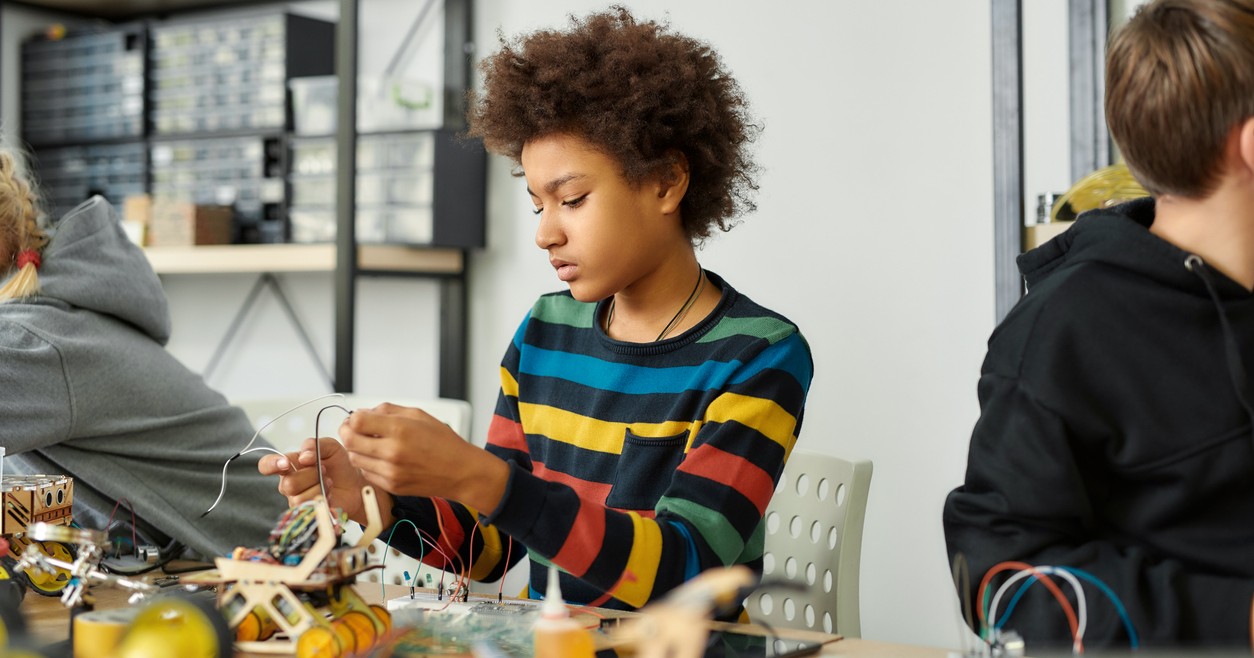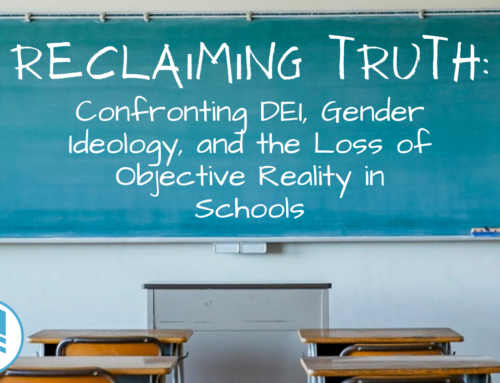
The education world is puzzled.
Haunting their hallowed halls is a persistent ghost that academia seems unable to lay to rest. This specter haunts college campuses to kindergartens—public, private, and home education alike.
And no matter how much research, data, or reports pile up, the myth of learning styles lives on.
The History of Learning Styles
Beginning in the 1950s, this popular approach to teaching started with the idea of placing students into four basic groups according to the style in which they most effectively learned.
The VARK (Visual, Auditory, Read/Write, Kinesthetic) system again gained traction in the 70s and late 90s. In the early 2000s, the concept exploded in popularity, generating nearly 90 different systems and an incalculable number of curriculums, misconceptions, and vain promises.

All of these systems—according to the fields of psychology and neuroscience—are based on what they label as a “neuromyth.” “In these fields believing in learning styles has been compared to believing in fortune telling,” reported William Furey in an article titled “The Stubborn Myth of Learning Styles”.
Three points are consistently repeated in the countless articles on the subject. These findings free educators from unnecessary expectations and fears associated with the learning styles method. With a balanced understanding of learning styles and their role in education, the myth may be laid to rest for good.
1. Science Refutes Learning Styles
Scientists have compiled an overwhelming amount of research about learning styles. The studies range from observations of kindergarteners and fifth graders to a more recent study with adult students.
Dr. Polly R. Husman released her findings on learning styles in 2019. College students were asked to identify their preferred learning style and then report on their study habits and the results. The findings showed no difference in the grades of students who used methods that supported their learning style and those who did not. In fact, the majority of students did not prefer study habits that reflected their learning style.
Dr. Husman summarized, “This research provides further evidence that the conventional wisdom about learning styles should be rejected by educators and students alike.”
Because of such findings, many organizations are now scrambling to stop the disproven practice. “Education research debunks the myth that teaching students in their preferred styles is an effective classroom practice,” reads the description of “Sending Learning Styles Out of Style,” a video created by the Smithsonian Institute for Education.
Good Thinking! – Sending "learning styles" Out of Style from Smithsonian Science Ed Center on Vimeo.
With all of its popularity, no evidence proves that providing a student with lessons tailored to their learning style helps them learn. Instead, scientists have discovered something quite different.
2. Science Shows Learning Styles to be a Preference, Not an Ability
In Dr. Husman’s study (referenced above), most students did not gravitate to study methods that aligned with their learning style. Her study also measured the relative success of each learning style when students did use them. Interestingly, none of the styles outperformed any of the others in the classroom. The students’ level of success stemmed solely from their own work ethic, not their learning style.
As more studies come to a close, there is a growing agreement in the scientific community that learning styles are a natural preference—not a hardwired ability.
The article “‘Neuromyth’ or Helpful model?” quotes Richard Felder, professor emeritus of chemical engineering at North Carolina State University. He writes, “Advocates who understand learning styles insist that they represent ‘preferences,’ not hard and fast lines that can’t be crossed….”
These learning preferences may change with time and are not a necessity to a student’s learning experience. Students may prefer to learn in a certain form, but that does not necessarily lead to better learning.
3. Undue Emphasis on Individual Learning Style can be a Hindrance, Not a Help
As we have seen, learning styles are unnecessary in improving a student’s education. However, teaching the idea of learning styles is more than just an outdated practice. There is also concern that undue emphasis on the subject can be harmful in the long term.
Impact on students
Psychologist Dr. Daniel Willingham has written extensively on the subject and is often quoted on a variety of topics within the learning styles debate.
He worries that students will adapt to fit their label, rejecting proven study methods or even entire subjects because they don’t fit with the normal context of their perceived learning style. A student might dismiss math because they were labeled as an “auditory learner” or think they can’t create good art just because they fell into the read/write category under the VARK system.
Another issue is that students may become entirely dependent on that learning preference instead of strengthening multiple study skills. This would be the educational equivalent of only eating preferred foods instead of a well-balanced diet, or exercising only one muscle until the others atrophy.
Impact on teachers
There are also the educators themselves to consider.
Professor of Biomedical Sciences, Phil Newton of Swansea University warns, “Spending time trying to match a student to a learning style could be a waste of valuable time and resources”—time and resources that are in short supply, as most educators know all too well.
When freed from the burden of creating lessons to meet each individual students’ learning style, teachers are then at liberty to explore a variety of educational experiences within their given subject.
Conclusion
Learning styles may be on the way out, but don’t be discouraged! As studies continue to disprove any link between student performance and learning styles, they also reveal helpful insights. Research reinforces the importance of educators engaging their students in a wide variety of sensory methods to support deeper and sustainable learning.
In an article published on Scientific American’s website, author Cindi May gives us several learning tools that have “universal benefit”:
“Students are more successful when they space out their study sessions over time, experience the material in multiple modalities, test themselves on the material as part of their study practices, and elaborate on material to make meaningful connections rather than engaging in activities that involve simple repetition of information (e.g., making flashcards or recopying notes). These effective strategies were identified decades ago and have convincing and significant empirical support.”
An article titled “Enough with the ‘Learning Styles’ Already!” states, “Studies have consistently shown that catering to differences in students’ preferred learning style does not actually result in any improvement in learning outcomes. On the contrary, there is good reason to believe that optimal learning for everyone involves the opportunity to engage in as many sensory modalities as possible.”
With such helpful information and a hopeful prognosis, educators and parents alike should be encouraged to seek out curricula and experiences that expose their students to a wide and balanced range of educational opportunities. This is a proven approach to strengthening their learning abilities.
Fostering healthy discussions between parents and educators, paying attention to curriculum, investing in updated educator training, and contributing to school board decisions are all ways that teachers and involved parents can create a better approach to learning.
With these efforts, the persistent ghost of learning styles may finally be laid to rest in peace.
Were you as shocked as we were to find out that learning styles “aren’t a thing”? Help us spread the word to more educators by sharing this article on social media or tagging a teacher you know!





[…] For instance, when utilizing this learning style, each child is valued as a unique individual. Children learn in different ways, and the Montessori method recognizes and accommodates this concept. The classroom design, […]